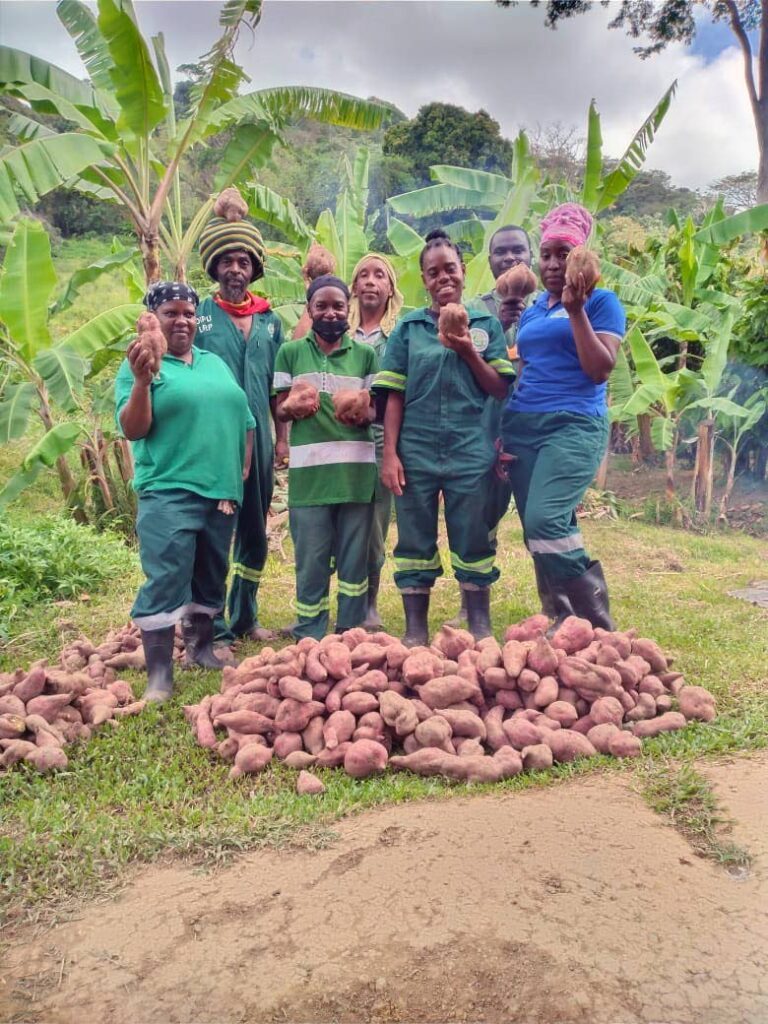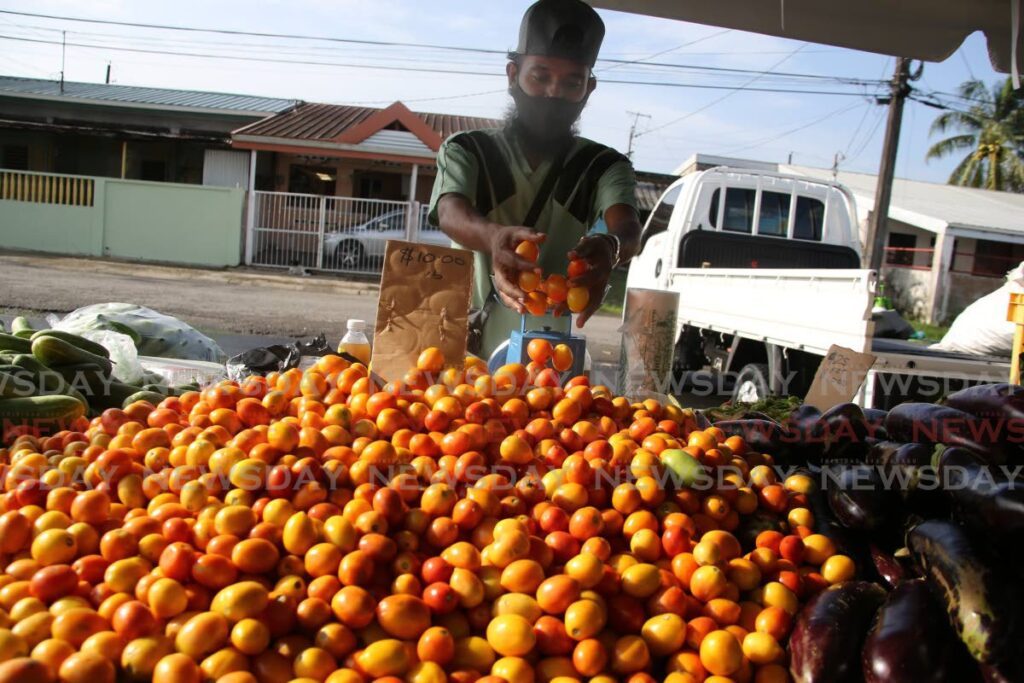FAO: How to grow resilience to climate change

IT IS AN undeniable fact that climate change has a real effect on the environment and a disproportionate effect on small island developing states (SIDS).
The Caribbean, being one of the smallest contributors to the global carbon footprint – producing a measly three per cent of the globe’s greenhouse gases – feels the effects the most. With extreme weather patterns such as tropical storms and hurricanes decimating entire islands and flooding and droughts destroying entire crops, climate change is one of the greatest threats to food security in the region and the world.
The FAO (Food and Agriculture Organization of the UN), in its ongoing mission to eradicate hunger especially in developing states, has begun implementing the Resilient Caribbean Initiative, sponsored by the Mexican-Based FAO. From 2018-2020 it focused on assisting countries in actions to facilitate access to climate financing for agricultural projects.
Because of restrictions and measures put in place to combat covid19 the Mexican Government, Caricom and the FAO reformulated the project to promote actions that contribute to reducing the impact of covid19 on households, livelihoods, food availability, food trade, markets and supply chains, but it maintained its mandate to assist countries in accessing climate financing as a means to combat food insecurity.
This is why one of the key goals for the FAO’s latest two-day workshop, hosted by the Resilient Caribbean Initiative, was increasing the technical capacity of Caricom governments to formulate effective project proposals to the Green Climate Fund and Global Environment Facility as well as supporting implementation of approved projects.
But locally assuring food security in the region goes well beyond climate change. Land tenure, infrastructure, and accessibility have also affected farmers' ability to secure food.
Region must adapt to climate change
Speakers at the Resilient Caribbean Initiative workshop on Tuesday highlighted the need for the region to adapt to the changing climate as temperatures rise and weather patterns change.
Environmental management and sustainable development professional Sasha Jattansingh highlighted evidence that suggests that in some areas, the damage done by climate change is already irreversible.
In her presentation she shared findings from the sixth assessment report by the Intergovernmental Panel on Climate Change (IPCC) done in 2023.
“What they found was that human-induced global warming of 1.1 degrees Celsius has already caused dangerous and widespread climate impacts,” she said. “The impacts have been on ecosystems, people and infrastructure.
"Future risks will escalate with every increment of warming. Some of the climate impacts are so severe that they cannot be adapted to.”
She listed tropical storms and hurricanes, rising sea levels and coral bleaching as some of the effects of climate change in the region.
Dr Ronald Roopnarine, researcher and academic at the St Augustine Campus of UWI, added that rainfall totals and the distribution of rainfall had also been affected, which is significant especially since most of the region’s agriculture centres on seasonal crops and is rain-fed.
“I know we tend to focus on mitigation, but my view is SIDS should focus on adaptation,” he said. “The fact is that if we cut our carbon emissions to zero, we still have to manage our developmental needs to the point where we understand that we need to progress certain sectors in order to simultaneously allow other sectors to progress.”
These environmental shocks are already affecting food availability through increasing food prices, said president of the Agricultural Society Daryl Rampersad, in a conversation with Business Day on Tuesday.
“For example, statistics have shown that for the past six years between the end of January to the middle of March, tomatoes have been sold wholesale between $2-$3 a pound on the local market.
"This is the first year that we have seen a change in that pattern with climate change being a factor. Tomatoes are being sold up to $7-$8 a pound on the wholesale market for small tomatoes and up to $12 a pound on the wholesale market for large tomatoes. You can see that change and attribute it to climate change."
A report by Policycircle.org on the prices of tomatoes in India also suggested climate change was one of the main factors in last year's inflation of the crop prices, and for all vegetable crops in general.
“Heavy rains reduce the yield and quality of produce by diminishing photosynthetic activity and altering the metabolism and enzymatic activity of crops,” the report said.
The result is a lower yield, which leads to higher demand, which in turn leads to inflated of prices.
Rampersad added that climate change also affected the availability of water.
“We are going through a very harsh dry season right now. We are going to see that due to climate change, only people with water will be able to produce. The same way we ask for channels to be cleared and to have infrastructural upkeep and maintenance, we need to get rid of excess water in the rainy season and to make water available during the dry season for the farming community."
At the workshop, Roopnarine added improved technology in water management to use methods of wastewater reuse, protected agriculture such as shade house agriculture, hydroponics and aquaponics and land management and stability assessments would help make the region’s agriculture sector more resilient and adaptable.
But Jacinto Buenfil, officer of environment and climate change, said adapting to climate change will also have significant challenges. In a conversation with Business Day on Wednesday he pointed out that, according to the UN Environmental Programme’s adaptation gap report last year, the estimated adaption gap is now US$194-$366 billion yearly.

He said the private sector also needs to contribute to achieve proper adaptation.
“Governments can’t secure that kind of money on their own, not even with our support. So the key is finding how to strategically start or improve that private-sector participation.”
He said the FAO invites private entities, whether they are agriculture processors, small farmers or tech developers, to take part in projects to encourage public-private partnerships.
What do farmers really need?
Rampersad said while climate change has become one of the burning topics of the global agricultural fraternity, locally, farmers need much more than green projects to address food security.
He said for local farmers, the major issues include land tenure, maintenance of infrastructure and even access to climate financing.
“The issue with accessing the benefits is within the criteria,” he said. “Well over 60 per cent of our farmers are now squatters and do not have access to the incentive programmes.”
He said proof of land tenureship is one of the main criteria needed to access incentives and programmes. The association is now working on a petition to change the criteria from proof of land tenureship, lease or rental agreement, to give farmers better access to benefits.
“There are several projects that we can get involved in to develop resilience against climate change in areas of water availability, and encouraging farmers to use new technology in agriculture and conserving water. Farmers need an increased access to these incentive programmes so they can purchase irrigation equipment and get their rebates,” he said.
Poultry farmer and owner of Humble Hands Homestead in Arima, Tristan Balloo, told Business Day his family-owned local organic farm specialises in special breeds of chickens, which they closely monitor during critical brooding periods. He said as a small-scale farmer, excessive heat affects the development of chicks.
“While heat is crucial for chick development, excessive heat, such as what we are currently experiencing, can significantly increase mortality rates,” he said.
He added that they control temperatures day and night to reduce fatalities and illnesses, which may not be feasible for larger-scale farmers.
Outside of environmental effects, he said, accessing direct personnel for public assistance is often a challenge.
“When visiting an office for a specific application or service, issues may arise such as incorrect county, missing forms, absent personnel handling specific matters, requiring the farmer to return. This could result from unclear guidance on the website or social platforms or simply a lack of interpretability based on one's background. A direct hotline for farmers to submit applications, inquiries, or recommendations would be beneficial.”
Growing initiatives to feed the region
The main objective of the Resilient Caribbean Initiative is to work with Caricom states to improve resilience to the impacts of covid19 and climate change. Programmes in the initiative focus on addressing water issues in agriculture and developing resilient school-feeding programmes and an aquaculture sector.
In Haiti, the initiative also supports the Germoplasm Centre, which promotes sustainable agricultural practices and improved food security through improving capacity in germination, cultivation of fruit and tree species and using solar-energy systems.
Buenfil said because of the UN’s mandate to work with government bodies, the initiative seeks access to sponsors such as the Green Climate Fund (GCF) and the Global Environmental Facility (GEF) through funding for government grants.
“We are an accredited entity that discusses with government their priorities and we support them in developing projects directly within our competitive advantage, such as agriculture, fisheries, agriculture value chains, natural resource management, conservation etc,” he said.
While the initiative itself does not seek out avenues for private-sector support, farmers do need to develop their business acumen to be more attractive to private investors.
“We tend to integrate that business development approach when we are developing strategies,” he said. “In general this is done in co-ordination with the government and at times with consultations with private-sector entities.”
He said these projects focus on the vulnerable who usually do not have means to access climate or environmental finance.
Projects range from small-scale ones with budgets of US$1-3 million, and large-scale projects, which would be higher than US$5 million.
One of the projects highlighted on Tuesday involved drone-mapping technology for better decision-making in the agricultural sector.
Raisa Spenser, project co-ordinator for disaster risk management and resilience in the FAO’s sub-regional office in Barbados, said the programme involved 90 participants who were trained in the use of the technology, with 41 people trained as pilots and the other 49 as analysts in a 12-week introductory programme.
“The use of drones in the agricultural sector is progressively increasing,” she said in a presentation on Tuesday. “It is part of an efficient and sustainable approach to agricultural management.”
She said the cameras mounted on the drones are equipped with special sensors that collect data on crop health, soil moisture and pest information. Farmers can then use that information to make data-based and informed decisions to optimise the use of resources for their farms.
It also assists with early detection of stressors such as impacts of droughts, invasive species or infestations. It could also map flood risks, which could help farmers to make necessary preparations for vulnerable areas.
“We worked along with ministries of five different Caricom countries – Dominica, St Lucia, Grenada, Guyana and St Vincent – to introduce the technology within the ministries.”
However, for projects such as these to expand in scale to have a significant effect on agricultural resilience, governments have to take the decision to focus on them.
“We have COP (UN Climate Change Conference) meetings every year. We have been meeting for 28 years on the matter of climate change. But the structure that was agreed upon was consensus – not majority or unilateral decisions. That is why decisions are taking so long,” he said.
“We have SIDS that contribute the least to the problem but are affected the most; we have the oil and gas producers who want to continue producing; we have the countries that want to develop their oil and gas industry; we have countries that have already developed their industries and now they want to say, 'Let's decrease emissions.' Countries have their own authority and will for their resources.
"All we can do is support and advise.”

Comments
"FAO: How to grow resilience to climate change"